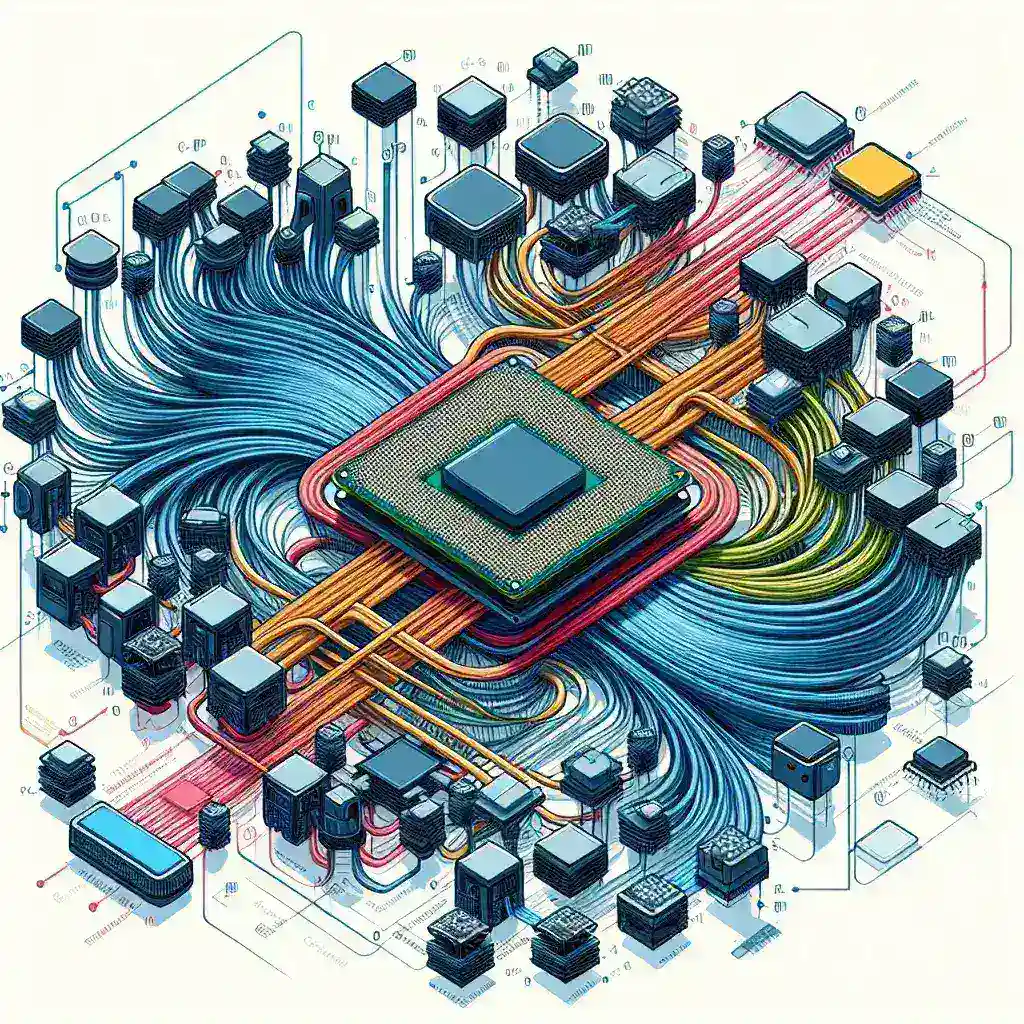How do CPUs interact with GPUs in tasks like physics calculations?
Modern computational tasks, particularly those involving physics calculations, demand a robust interaction between CPU (Central Processing Unit) and GPU (Graphics Processing Unit) to deliver optimal performance. Understanding how these two components collaborate can provide deeper insights into efficient computing.
Understanding CPU and GPU: An Overview
In the world of computers, the CPU is known as the ‘brain’ of the system, responsible for general-purpose processing and managing instructions. By contrast, the GPU specializes in parallel processing, making it ideal for rendering graphics and handling vast amounts of data simultaneously.
| Feature | CPU | GPU |
|---|---|---|
| Primary Function | General-purpose computing | Parallel processing |
| Core Count | Few (4-16) | Many (hundreds to thousands) |
| Clock Speed | High | Moderate |
| Processing Units | ALUs (Arithmetic Logic Units) | CUDA Cores/Stream Processors |
The Synergy Between CPU and GPU
For tasks like physics calculations, both CPUs and GPUs have unique but complementary roles. Let’s delve into the intricacies of their interaction:
Task Delegation and Workflow
In a typical computational setup, the CPU initializes the task and delegates compute-intensive operations to the GPU. This delegation includes:
- Task Initialization: The CPU sets up and manages the overall workflow, including data preparation and initial processing.
- Data Transfer: Once the setup is done, data is transferred from CPU memory to GPU memory. Efficient data transfer techniques like DMA (Direct Memory Access) help minimize latency.
- Parallel Processing: The GPU performs parallel computations on the data, executing calculations simultaneously across its numerous cores.
Example: Physics Simulation in Gaming
Consider a physics simulation in a gaming environment:
- Collision Detection: The CPU may calculate initial object positions and potential collision pairs.
- Physics Calculations: Once potential collisions are identified, the GPU calculates the physics interactions, such as momentum transfer and object deformation, using parallelism to handle multiple interactions swiftly.
- Rendering: Post-calculation, the GPU renders the graphics, displaying the physics results seamlessly in the gaming environment.
Synchronization and Optimization
To achieve maximum efficiency, synchronizing the CPU and GPU is crucial. Synchronization ensures computations are completed in harmony, avoiding bottlenecks. Optimization practices include:
- Pipelining: Overlapping CPU and GPU tasks to keep both components productive.
- Memory Management: Efficiently managing memory access and using shared memory space to reduce overhead.
- Algorithm Optimization: Tailoring algorithms to leverage GPU parallelism while minimizing CPU-GPU communication.
Real-World Applications
The complementary strengths of CPUs and GPUs extend beyond gaming into various fields:
Scientific Simulations
Physics calculations in fluid dynamics, quantum mechanics, and astrophysical simulations rely heavily on the interplay between CPU and GPU. The CPU manages the algorithmic structure, while the GPU accelerates the matrix computations essential for simulations.
Machine Learning and AI
Training machine learning models often involves significant physics-based calculations, such as particle dynamics in reinforcement learning. The GPU accelerates matrix multiplications and vector operations, with the CPU orchestrating the overall training process.
Medical Imaging
In medical fields, CPUs and GPUs collaborate to process imaging data, performing real-time physics simulations to enhance images, aid in diagnostics, and plan treatment options.
Future Trends
As technology advances, tighter integration of CPU and GPU capabilities is expected. Emerging trends include:
- Heterogeneous Computing: Seamless integration of CPU and GPU on the same chip to reduce latency and increase efficiency.
- AI-Driven Optimization: Using artificial intelligence to manage and optimize CPU-GPU interactions dynamically.
- Quantum Computing Integration: Leveraging quantum processors alongside traditional CPUs and GPUs for even more complex physics calculations.
Conclusion
The interaction between CPUs and GPUs is pivotal in performing complex physics calculations. By leveraging their unique strengths, they enable significant advancements in various computational tasks. Understanding this synergy not only enhances performance but also paves the way for future innovations in computing.

